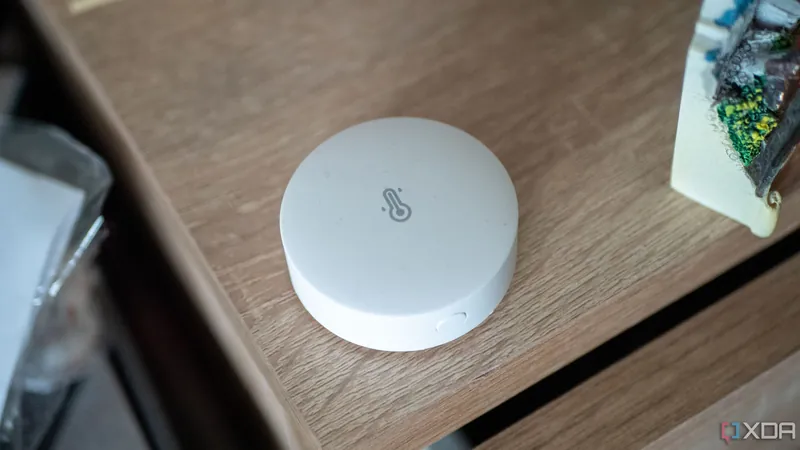
How Zigbee Transformed My Smart Home: The Ultimate Guide to Home Automation
2025-04-07
Author: Ming
Diving into the world of home automation has been a thrilling journey for me! After extensive exploration of Home Assistant, a powerful open-source home automation platform, I decided to take it a step further by incorporating Zigbee into my setup. For those unfamiliar, Zigbee is a wireless communication protocol designed for Internet of Things (IoT) devices, and it's revolutionizing how we interact with our households.
What’s Zigbee and Why You Should Care?
Zigbee operates on its own network, distinct from your Wi-Fi. This aspect provides enhanced reliability and lower power consumption for your devices. To set up a Zigbee network, you typically need a Zigbee coordinator, such as a USB dongle connected to your computer or NAS running Home Assistant. With this in place, you can connect an array of compatible devices, enabling them to communicate seamlessly.
While my initial experience with Home Assistant’s built-in Zigbee Home Automation (ZHA) integration was promising, I quickly ran into connectivity problems. I then switched to Zigbee2MQTT (Z2M), which integrates with the MQTT protocol and has provided a more stable experience. Z2M also supports a wider range of devices, making it a great choice for anyone looking to expand their smart home capabilities.
Transforming My Living Space with Smart Devices
My recent purchases have already changed the way I live. Currently, I have a connected mix of devices including a motion sensor, window detectors, temperature and humidity monitors, and smart lighting. The automation capabilities are astonishing! For example, I can monitor the temperature in my bedroom, and if it drops too low due to an open window, I get a notification on my phone. This feature alone has encouraged me to rethink how I control my living environment.
Pairing the temperature and humidity sensors with window sensors allows for even deeper automation. If the window is already closed and the temperature plummets, I can receive alerts to switch on the heating. If I had a smart dehumidifier, it could automatically engage too when humidity levels rise too high!
In addition to these, I installed a human presence detector. This device automates my room lighting so that it turns on as I enter—no more fumbling for switches or voice commands. Plus, a smart knob allows me to adjust the brightness or change lighting colors effortlessly.
Recently, I also acquired a Xiaomi Temperature and Humidity monitor clock, which I plan to use in different rooms, enabling me to maintain control over air quality throughout my home.
Exploring More Zigbee Options: What’s Next?
The possibilities are endless! There are smart thermostats, water leak detectors, gas controllers, and much more on the horizon. Imagine a fully integrated environment where all your devices communicate to ensure optimal comfort, security, and energy efficiency. Zigbee2MQTT boasts an impressive list of compatible devices, providing inspiration for endless improvements and innovations in your home.
Getting into home automation can be daunting, but the benefits are manifold. It's more than just convenience; it represents a future where homes operate smarter, almost intuitively. Whether you're a tech enthusiast or just looking to simplify your life, setting up a Zigbee network with Home Assistant is certainly worth considering. Embrace the change, and watch your living space evolve into a modern sanctuary seamlessly attuned to your needs!

 Brasil (PT)
Brasil (PT)
 Canada (EN)
Canada (EN)
 Chile (ES)
Chile (ES)
 Česko (CS)
Česko (CS)
 대한민국 (KO)
대한민국 (KO)
 España (ES)
España (ES)
 France (FR)
France (FR)
 Hong Kong (EN)
Hong Kong (EN)
 Italia (IT)
Italia (IT)
 日本 (JA)
日本 (JA)
 Magyarország (HU)
Magyarország (HU)
 Norge (NO)
Norge (NO)
 Polska (PL)
Polska (PL)
 Schweiz (DE)
Schweiz (DE)
 Singapore (EN)
Singapore (EN)
 Sverige (SV)
Sverige (SV)
 Suomi (FI)
Suomi (FI)
 Türkiye (TR)
Türkiye (TR)
 الإمارات العربية المتحدة (AR)
الإمارات العربية المتحدة (AR)